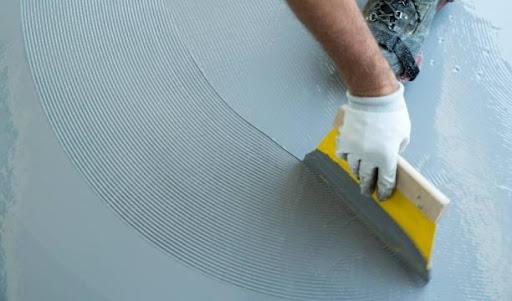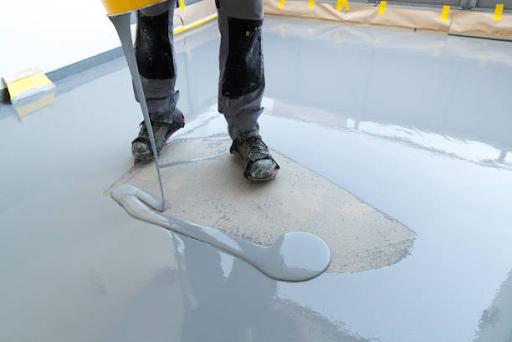Does Ceramic Tile Need To Be Sealed
Every homeowner wants beautiful floor tiles that are easy to clean and maintain. You may however find yourself in a house with tiles that are difficult to clean and maintain. Most people will advise you to seal the tile flooring, but you may assume you only need to seal the grout. What’s the best approach to look after your lovely tiles?
This question has a number of factors.
The bathroom, for starters, has a variety of tile types. Floor tile, shower tile, counter tile, and tile backsplashes are all options. The type of tile you select is the second factor to consider. Sealant options for natural stone tiles differ from those for gleaming ceramic or porcelain tile.
Most ceramic tiles are not sealed. This is because of the glass glaze on top of the clay that prevents anything from penetrating it. When ceramic tiles are not glazed, they simply need to be sealed. (Tile Fix Direct, 2020)
Is It Better To Seal The Tile Or The Grout?
It’s crucial to understand that a tile floor is made up of two parts: the tile and grout. The actual tiles make up the majority of the floor, but the grout is also as significant. The substance that holds the tiles in place is often ignored.
The grout must be sealed and maintained. It’s porous by nature and will stain quickly. Because grout must cure first, most tile installers do not seal their floors.
To maintain the appearance of your grout it’s important to seal it. Sealing grout also makes it much easier to maintain clean.
When Should You Seal Your Tiles
Tile is sealed to keep dirt, spills, and even the grout used to fill in the seams from staining it. Natural stone tile is not cheap, and neither is the work required to install it, so safeguarding your investment is prudent. This is because it’s nearly impossible to remove a stain after it’s lodged in the tile.
If your tile is ceramic or porcelain, it is unlikely that it will require sealing. There are a few exceptions, so double-check with your manufacturer. If your tile is made of stone (such as slate, marble, granite, or travertine) it must be sealed.
Stone is porous by nature and will readily absorb spills and stains. Porous tiles need to be sealed prior to grouting. This is best done before installation, then reapplied as needed when the grout has fully set. (The Spruce, 2021)
ProTip Takeaway. Sealing colored tiles can occasionally change their color or tone. To guarantee you like the results, test the sealant in an inconspicuous spot before applying it to the entire surface of the tile.
Why You Shouldn’t Seal Ceramic Tiles
Hardwood floors are usually the only ones that need to be sealed. Most ceramic tiles have a glass glaze on top of the clay back. This creates a non-porous surface because glass cannot be penetrated unless it is unglazed.
Most floors are sealed to prevent them from being damaged by excessive moisture. Ceramic tiles, which have a moisture-resistant barrier, are exempted from this rule.
Only unglazed ceramic tiles, as previously stated, require sealing. This is because the protective barrier is missing in this form of ceramic tile. It’s worth noting that most home improvement stores provide glazed ceramic tiles that don’t need to be sealed.
If you’re set on sealing your ceramic, it might be time to rethink your strategy. Here are some reasons why your ceramic tiles should not be sealed:
Ceramic tile sealing may make cleaning more difficult.
It is a common assumption that sealing your ceramic tiles will make them easier to clean; however, this is not the case. We know that ceramic tiles are easy to clean and maintain because of their nature. It’s possible that the problem is that you haven’t found the right cleanser for your floor.
Stronger cleaning chemicals should be avoided because they may cause damage to your floors. You may need to do some research to identify the best cleaning products for your floor. Begin by putting the product to the test in an inconspicuous part of your floor. The outcome will indicate whether you should proceed or attempt a different cleaning product.
Ceramic tile sealing makes the floor surface slippery.
Using a non-slip type of sealer may help to prevent this problem. However, we do not recommend sealing ceramic floor tiles. Even if you use a non-slip floor sealer, you’ll have to reapply it on a regular basis. This will in return create a new cleaning problem.
Ceramic tile sealing makes maintenance more difficult.
It’s simply too much effort to maintain a sealed ceramic floor tile. Because most floor sealers are softer, when applied in traffic areas, they will be harmed by the traffic, spills, and everyday wear and tear. This almost always means extra work for you. You’ll have to spend more money on tile repair and replacement.
Sealing Your Ceramic Tiles Might Make Them Look Bad.
Another assumption is that sealing your ceramic floor tiles would improve their appearance. It’s important to note that ceramic floor tiles are not designed to be sealed.
Your ceramic tiles may have a dull appearance despite using many cleaning procedures to restore their glossy look. If none of the options work, you may need to re-tile the entire floor rather than seal it. (Home Décor, 2020)
Read Also: Calibrated VS Rectified Tile
Types Of Tile Sealants
Tile Sealers are divided into two categories; penetrating sealers and surface sealers.
Penetrating Sealants
These seep into the tile or grout and produce a stain-resistant barrier just beneath the surface of the tile. The appearance of the tile will not be altered by most penetrating sealers.
Surface Sealants
These are non-porous, stain-resistant sealants that are applied to the top of tile and grout. The surface sealer will enhance the tile’s rich natural hues and add a small sheen, similar to a wood-grain ceramic tile.
What Kind Of Ceramic Tile Sealer should You Use?
A sealer is not required for most ceramic tiles with a high gloss finish. Glazing transforms the surface of the tile into a thin layer of molten glass. If you’re installing new tile, a little coat of penetrating sealer might be used to fill the pores. The appearance of the tile is unaffected by penetrating sealers.
Rather, they soak just beneath the tile’s surface to prevent water infiltration and discoloration. This type of impregnating sealer fills any small holes or defects in your ceramic tile. It also cleans the grout around the tiles. You might also use it to touch up your tile if you think it needs it.
ProTip Takeaway. New porcelain tile, like ceramic tile, does not require sealing. A smooth finish protects the tile surface against water penetration and discoloration.
However, the grout will need to be sealed. Some dense porcelains may appear unglazed, in which case a coat of sealer should be applied.
Sealing The Grout Lines
Although ceramic tiles were never designed to be sealed, there is a compelling case to be made for sealing porous grout lines. They tend to gather and hold unsightly dirt and pollutants over a period of time. It’s recommended to use a penetrating or impregnating type of sealer like Pro Seal Ultra instead of a coating for this.
The grout sealer is not visible, but it repels water and stains. This job is made easier by several fantastic grout sealing application equipment. If you acquire some grout sealer on the tile surface, you should be able to wipe it away easily with the correct product if you remove it straight away. (Rogue Engineer, 2020)
How To Tell If Grout Is Sealed
By sprinkling a few droplets of water on your tile or grout, you can sometimes determine if they’ve been sealed. They are probably not sealed if they darken or change color. They may have already been sealed if they remain the same color.
How to Clean Grout and Tiles
Maintaining and cleaning a sealed ceramic floor tile requires a lot of effort and money. If a stain appears on your tiles, all you have to do is scrub it with a gentle bleach solution. Scrub your tiles gently with a soft brush to avoid scratching or damaging them.
Before grout can be sealed, it needs to cure for roughly a month. If it gets stained before it’s sealed, just scrub it with a mild bleach solution. If you seal the soiled grout, the stain will almost certainly never come out. (XO2, 2020)
Please Note: It is critical to use the correct type of tile sealant for the type of tile being installed. Using the incorrect sealant could cause irreversible damage to the ceramic tile.
Do You Need Any Help In Flooring?
We hope you find this information useful. If you are in Houston Texas and require any assistance or advice on the floor care please contact us today. Visit our offices at 12711 Fuqua St, Suite 106, Houston, TX 77034. You can also visit our website or call us on 832 800 8889 for a free consultation today.







